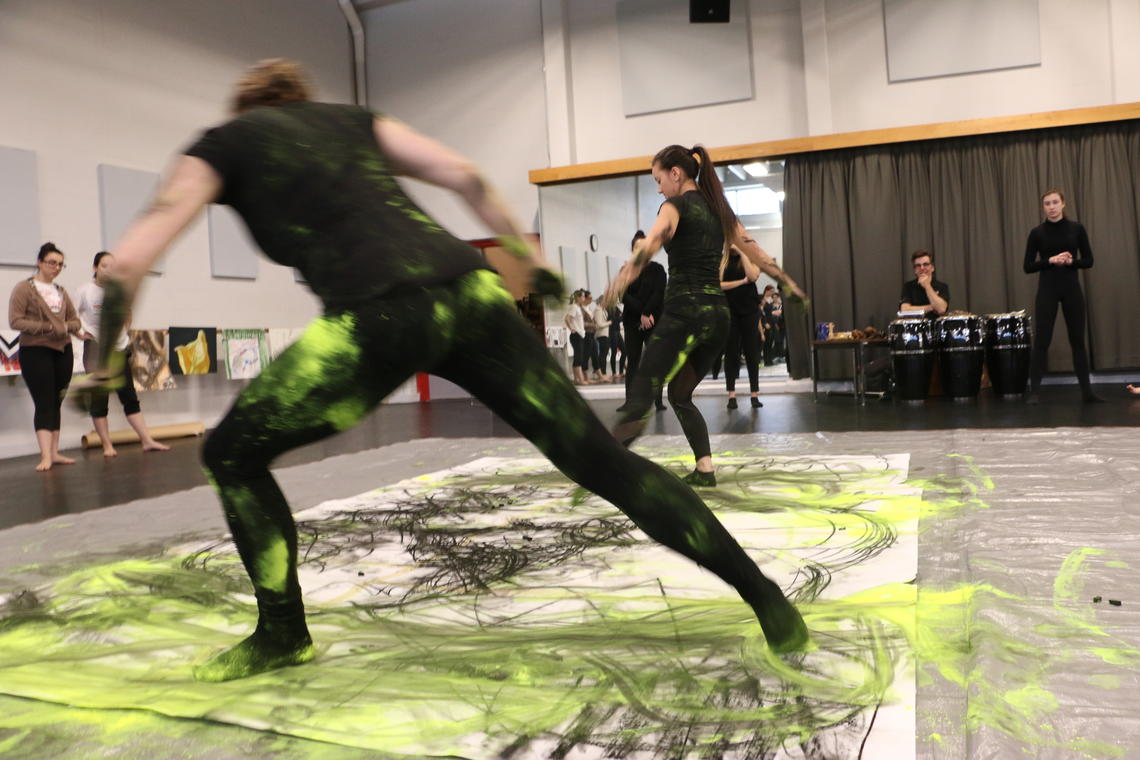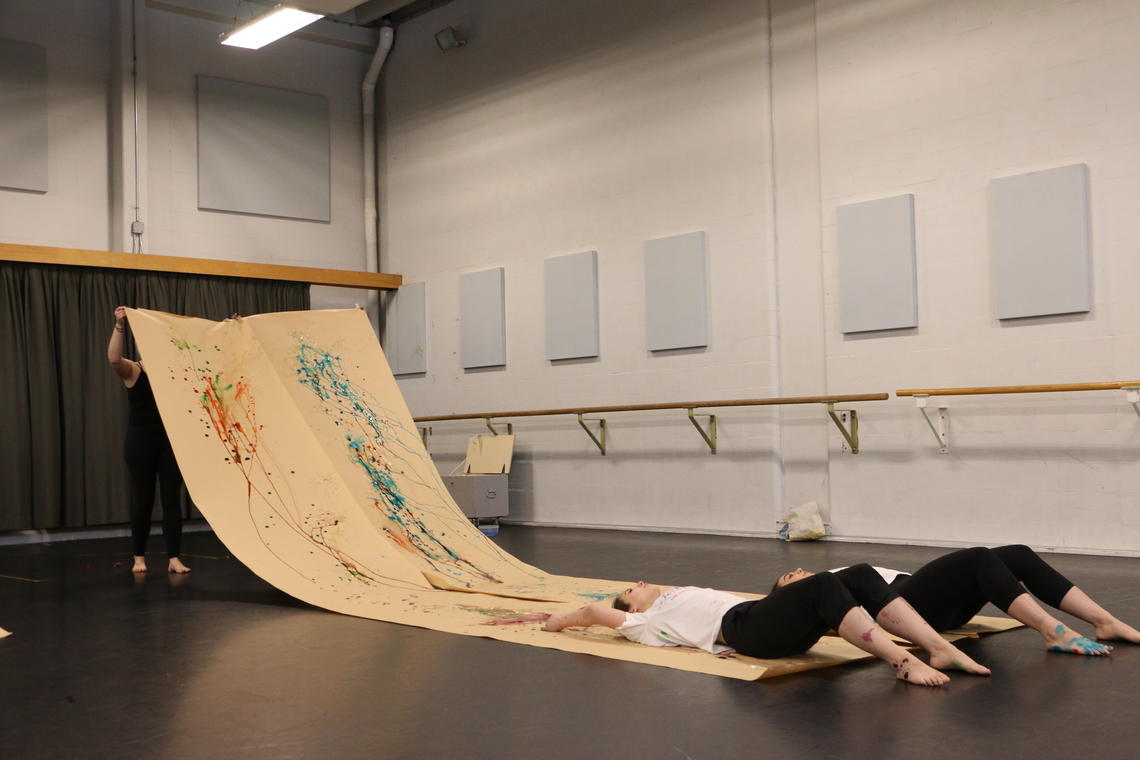April 25, 2018
Collaborative assignment takes art and dance students out of their comfort zones

Art and dance students came together during one class and were divided into small groups.
Tia Halliday
In his book The Beautiful Risk of Education, Gert Biesta talks about taking risks as part of effective education. University of Calgary art instructor Tia Halliday took that idea to heart for her class ART 343: Construction of Pictorial Space. Halliday could have easily focused on teaching a more traditional approach of perspective and depth in drawing. Yet, she thought about expanding the idea of pictorial space in relationship to performance space by tasking art students to create a performance art project in collaboration with dance students.
“Part of my pedagogical approach is to always be challenging myself, always be experimenting,” says Halliday. “Collaborations like this one are a risk. It could have been terrible, but only by taking these types of risks, you realize that interesting pedagogical experiences are possible for students.”
Halliday approached associate professor Melanie Kloetzel in the Faculty of Arts' dance division to see if a collaboration with DNCE 209 would be possible. It was. Art and dance students came together during one class and were divided into small groups. Each group was asked to create a performance art project that would be presented in the class the following week.

The students engaged and moved out of their comfort zones.
Tia Halliday
“They had very little time and that was a very effective pedagogical tool. They just had to work together,” says Halliday.
The results were encouraging. The students engaged and moved out of their comfort zones. Art students got involved in movement while dance students participated in the drawings, using different art materials.
“They looked at each other as experts in their own field,” says Kloetzel. “It really helped with their own confidence and understanding of how different disciplines can work together.”
Students agreed it was a great experience. “We brought our dance knowledge, they brought their art skills and we combined it together,” says dance student Lauren Brady.

Art students got involved in movement while dance students participated in using different materials
Tia Halliday
“Everybody was open to everyone’s ideas. That really helped,” says art student Kiana Campbell. “No one had a background in performance art so we were all experimenting together.”
“It was good to see a different artistic creative process,” says dance student Cindy Ansah. “Dance is so focused on movement, art is looking at shapes and lines. It was interesting to mesh the two together. It has opened up my eyes that there is more to visual art than just paper and chalk or paint.”
“We usually don’t get a lot of opportunities to do something contemporary like a performance piece,” says art student Sarah Almquist. “It was definitely a unique experience that added to the overall tone of the class.”
Halliday and Kloetzel call the collaboration successful and underline that there are more exciting possibilities for cross-campus collaborations in the future.

Art instructor Tia Halliday worked with Melanie Kloetzel in dance, for a performance art project.
Tia Halliday
